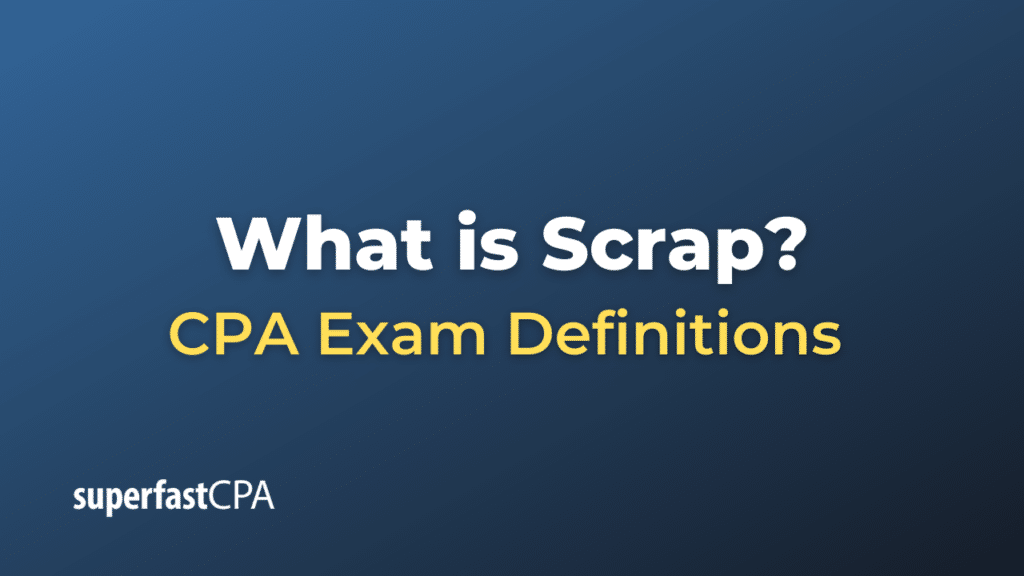Scrap
“Scrap” refers to discarded waste material, especially metal suitable for reprocessing. It can come from manufacturing and consumption activities. Scrap materials are often recycled into new products. Here’s a breakdown of the term in various contexts:
- Manufacturing: During manufacturing processes, not all material ends up as part of the final product. Leftover materials, offcuts, or defective products that are discarded are termed as scrap. For example, when metal parts are machined, there might be metal shavings or cut-offs that are collected and later recycled.
- Economics and Accounting: In business accounting, “scrap value” refers to the estimated residual worth of an asset after it has been fully depreciated. It’s the value of an asset for its next best use, which is often being sold for parts or materials.
- Recycling: Many items, like cars at the end of their life, appliances that no longer work, or even building materials from demolitions, are collected and processed as scrap. For metals, this typically involves melting down the material and recasting it into new products.
- Electronics: Electronic waste, or e-waste, contains both valuable materials that can be recycled (like gold, silver, and copper) and hazardous materials that need to be handled properly. When recycling e-waste, the usable materials are considered scrap and can be reprocessed.
- Paper Industry: In the paper industry, scrap refers to waste paper that is suitable for recycling.
It’s worth noting that the process of recycling and repurposing scrap can lead to energy savings and conservation of natural resources, making it an important aspect of sustainable practices in various industries.
Example of Scrap
Let’s take the automobile industry as an example:
Scrap in the Automobile Industry:
- Manufacturing Scrap:
- During the production of car parts, sheets of metal are stamped into shapes to create components such as doors, hoods, and fenders. The excess metal that is trimmed off during this process is considered manufacturing scrap.
- When assembling circuit boards for in-car electronics, there might be faulty components or boards that do not pass quality control. These are also set aside as scrap.
- End-of-Life Vehicles:
- After many years of use, a car may no longer be functional or economically viable to repair. Such vehicles are sometimes referred to as “scrap cars.”
- These old cars are taken to recycling facilities where they are stripped of reusable parts like seats, mirrors, or lights.
- After that, they’re often crushed or shredded. The metal is separated and sent to smelters to be melted down and recycled. This metal scrap can then be used to produce new car parts or other metal products.
- Economic Consideration:
- From an accounting perspective, when the car has reached the end of its depreciable life, it has a “scrap value.” This value might be what the car is worth as metal and parts for recycling. In many accounting methods, the scrap value is considered the residual or salvage value of an asset after depreciation.
- E-waste:
- Modern vehicles contain a significant amount of electronics—from entertainment systems to advanced driving assistance systems. When these electronic components fail and can’t be repaired, they become e-waste. This e-waste can be processed to reclaim valuable metals like gold, palladium, and copper.
Conclusion:
In this example, the automobile industry demonstrates how scrap is generated at various stages of a car’s life cycle—from the production of its parts to the end of the vehicle’s life. By recycling and reusing these scraps, the industry can conserve resources, reduce waste, and promote sustainability.













